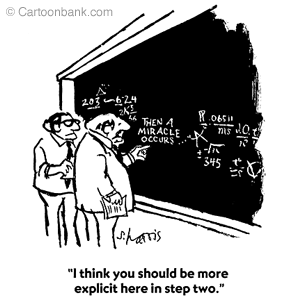In the last few years several prominent liberal arts colleges have made post-graduate success a central measure of the institution’s educational quality (for example, see such plans or programs at St. Olaf College and The College of Wooster). Despite what some old school moon-howlers might have you believe, this move isn’t driven by a rejection of the liberal arts or an administrative coup d’etat. (If we’d given up on the liberal arts, we’d have all gone for higher paying gigs at some fly-by-night for-profit a long time ago, and – with all due love and respect for my administrative compatriots – we aren’t nearly smart enough to pull of a decent coup d’etat.)
Rather, what most of us have come to realize is that in order for the liberal arts to thrive into the next century, we have to reframe, refocus, and refine the way that we operationalize the liberal arts in the context of our current social, cultural, and economic conditions. Just like the approach that drove the successful emergence of small liberal arts college during the 18th and 19th centuries, we are again faced with the need to adapt our commitment to developing creative and innovative problem-solvers through interdisciplinarity and the synthesis of great ideas.
In the next three posts, I’d like to explain in more depth what I mean by reframing, refocusing, and refining the way that we operationalize the liberal arts in a 21st century context. But for now, I’d like to highlight one data point that I think underscores a need to strengthen our focus on preparing all students equally for life after college.
In the 2013 administration of our recent graduate survey (alumni surveyed nine months after they’ve graduated from Augustana), we asked our alums about the degree to which they thought Augustana prepared them to succeed in their current endeavors. Since we had already organized the survey to take those who had chosen to go to graduate school and those who had pursued immediate employment to separate subsets of questions, they answered two different versions of this questions, each worded to more specifically get at the relationship between their Augustana education and their current path.
The difference between the proportion of alums who felt they were prepared well depending upon whether they went to grad school or went to work seemed large enough to consider further. Among those who went to grad school, 78% said that they were “fairly well” or “very well” prepared for their grad program. By contrast, among those who went to full-time employment, only 65% said that they were “fairly well” or “very well” prepared for their first job. (The other response options were “somewhat,” “a little,” and “not at all.”)
Why might this be? In digging further into the data, it appears that some initial suppositions don’t always hold true. Pre-professional majors don’t always feel well prepared for their subsequent path (whether it be work or grad school) and more traditional liberal arts majors don’t always feel less well-prepared for their subsequent path. We didn’t find a strong correlation between a student’s final GPA and their sense of preparation. Moreover, both groups of respondents (grad students and full-time employees) were scattered across a range of programs or professions, so it didn’t appear that any specific undergraduate programs were driving the results one way or the other.
Interestingly, it appears that the students who got a preview of what life would be like during the next phase of their own post-graduate path were the ones who felt best prepared by their Augustana experience. Alums currently employed in a job who also participated in an internship while at Augie tended to feel better prepared than those who did not do an internship. Similarly, the alums currently in grad school who also participated in a research project either with faculty or on their own tended to feel better prepared than those who did not have any research experience.
In general, this data point suggests that we might need to improve the degree to which we prepare students who go directly into the workforce after college. In some ways, it doesn’t seem particularly surprising that an institution largely governed by faculty with Ph.D.s from elite research universities would be better at preparing students to succeed in grad school than in full-time employment. This might be simply a case of something where we have to put a more concerted effort into preparing the students who aim for a full-time job right out of college just because our frame of reference would likely advantage graduate school preparation.
This finding also seems to provide some insight into the kinds of advice that we ought to give students based on their post-graduate goals. Students intending to go into the workforce might be better suited for internships while students with plans for grad school might be ideal candidates for an extended research experience. And while some of these experiences might be credit-bearing, in many cases they are outside the scope of the curriculum; another reason why it is important for advising to be conceived as a means of developing students holistically instead of merely selecting courses.
In the end, I don’t know that this finding demands a wealth of professional development for faculty – although if done right such assistance is not a bad thing. Instead, resolving this gap may require little more than recognizing the extent of our own experiences, adjusting for our biases, and explicitly connecting students with the right resources that uniquely fit with their post-graduate aspirations.
Welcome back to campus! It’s lonely around here without you.
Make it a good day,
Mark

